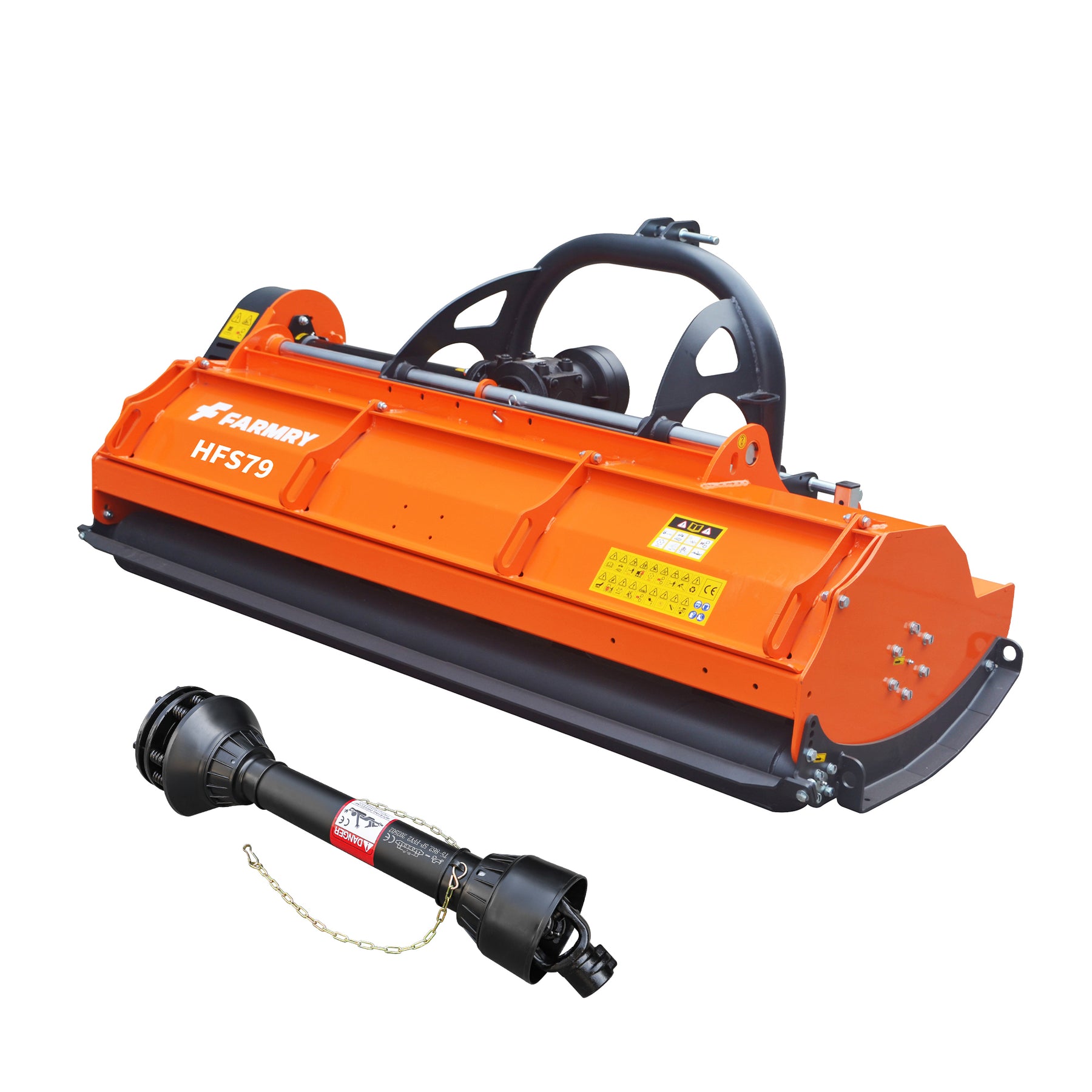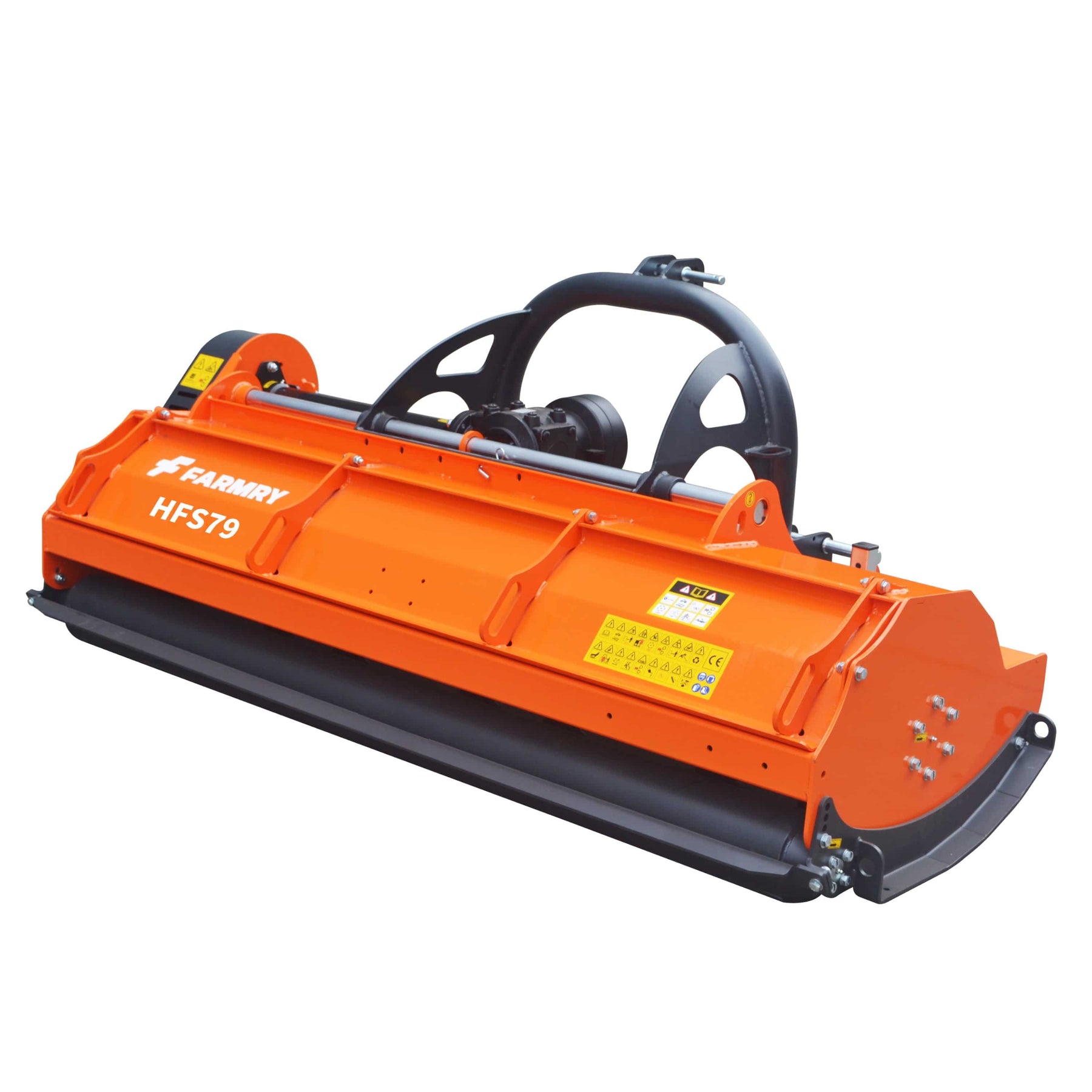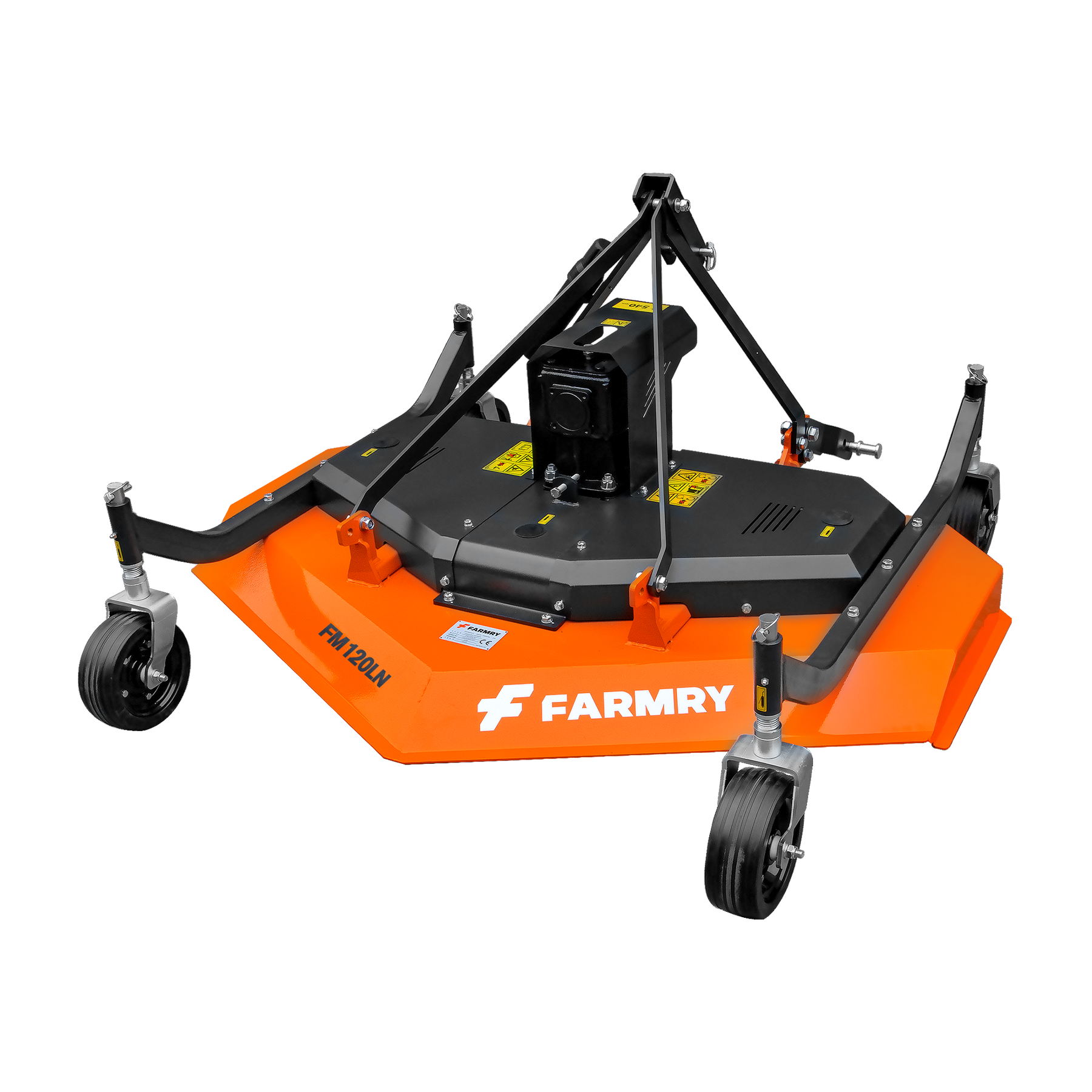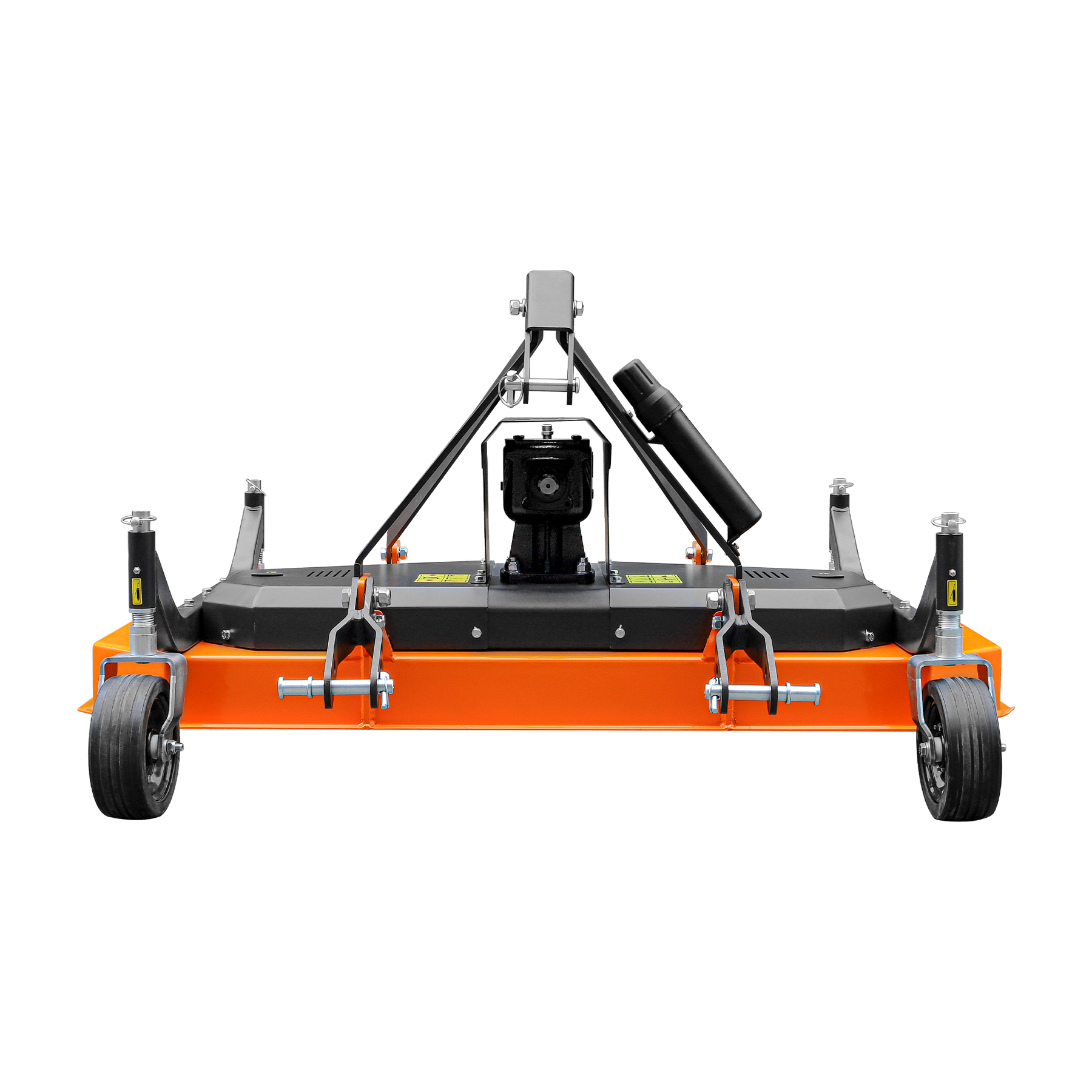FAQs
1. How big can a 3 point PTO flail mower cut?
Flail mowers come in various cutting widths, ranging from about 40 inches to over 90 inches. The 79 inch flail mower is ideal for users who need to cover larger areas efficiently, such as pasture, orchard, or field maintenance. It balances size with maneuverability, making it a top choice for 50–85HP tractors.
2. What size 3 point PTO flail mower for 50HP tractor?
A 50HP tractor can easily handle a flail mower with a mowing width between 63 and 79 inches. That makes the 79" Farmry HFS79 a great fit, especially when dealing with large spaces, overgrowth, and uneven terrain. Just ensure your tractor's hitch and pto shaft match the mower's specifications for smooth operation.
3. What size 3 point PTO flail mower for 30HP tractor?
For a 30HP tractor, you'll want a flail mower between 50–63 inches wide. A larger model like the offset flail mower (79”) would be too much load. Always match the mower deck size to your tractor’s capabilities for safe and efficient mowing without strain on the tractors pto shaft.
4. How much horsepower do you need for a 3 point PTO flail mower?
Most flail mowers require between 25–85 HP, depending on the overall width and blade configuration. Larger models like the 79” HFS79 need at least 30HP to spin the electronically balanced rotor effectively and cut consistently in dense grass or brush. This prevents damage to the mowers pto shaft and ensures lasting durability.
5. Is a flail mower better than a slasher?
Yes, especially if you want a cleaner finish, better safety, and versatility. Flail mowers use hardened steel hammer blades or heavy duty hammer blades that provide finer mulching and handle tough vegetation with ease. Unlike conventional rotary mowers, flails have a safer design and adapt better to mower deck suspension, slopes, and close-quarter work near fences or trees.
How to Choose the Right 3-Point PTO Flail Mower
Selecting the ideal 3-point PTO flail mower means balancing your tractor’s specs, your land’s terrain, and the cutting results you want. Here are three key considerations to help guide your decision:
1. Match the Mower to Your Tractor’s Specs
Make sure the flail mower is compatible with your tractor’s PTO horsepower and hitch category. It’s important to even the pull arms and verify the PTO height for stable operation. If you're using larger tractor tires, check for proper clearance to avoid interference during side shift or offset mowing.
2. Consider the Terrain and Cutting Needs
If you’re mowing along ditches, field edges, or slopes, look for models with hydraulic offset or manual side shift. These allow you to adjust mowing position easily, especially on uneven terrain or around obstacles. The rapid downward deck rotation and rapid upward deck rotation of high-quality flail mowers ensure smooth transition when moving over bumps or dips, minimizing scalping or missed spots.
3. Focus on Blade and Deck Durability
Choose a mower with hardened hammer blades, heavy duty steel roller, and a reinforced mower deck. These features guarantee reliable cutting performance, especially when handling dense brush, tall grass, or rocky ground. Durability and balance in blade systems are essential for long-term smooth operation.




















